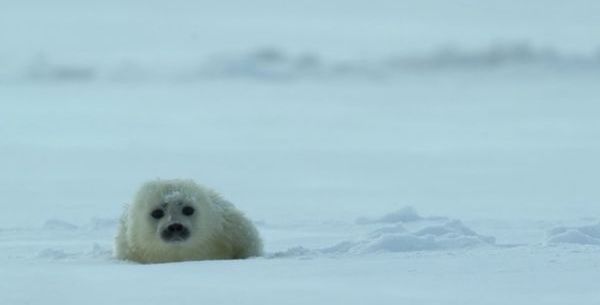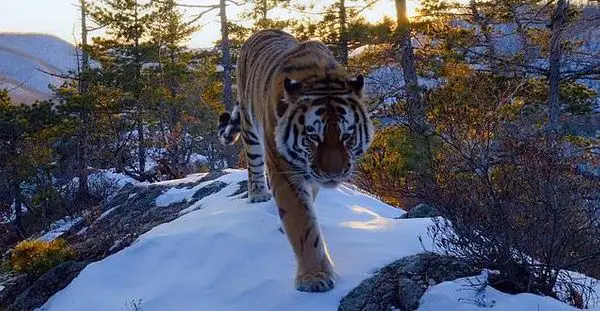OUR PLANET: Crucial Warning Balanced With Stunning Visuals

Scottish cinephile & feminist, with a Masters in Film &…
Our Planet, a Netflix documentary series narrated by British naturalist and broadcaster Sir David Attenborough, is an eight-part insight into the damage to the planet and its other inhabitants caused by humans and the ever-increasing threat of climate change. Each episode takes us to a variety of locations across the globe and skillfully captures animals and other creatures in their natural environments.
Created by producers of BBC productions Planet Earth and Frozen Planet, Alastair Fothergill and Keith Scholey, and made in collaboration with the World Wildlife Fund, the series took four years to shoot in over 50 countries. The scale of this series and its global content demonstrates the magnitude of humanity’s destruction, while it also reminds us of the protective measures that can still be taken “to ensure a future where humans and nature can thrive”.
Global Destruction
After the introductory “One Planet”, the crew takes us to witness the effects of melting ice and rising water temperatures in the Arctic and Antarctic seas for the following episode. The third demonstrates the dangers of deforestation and the palm oil industry’s impact on jungles’ and rainforests’ inhabitants, while the following installment reveals dying coral reefs as a direct consequence of increased water temperatures and fishing net destruction.

Nature’s need for protection from humans is also underlined in episodes 5 and 6 where, in the grasslands, animals become victims of poaching and other conflict with people over territories, and industrial fishing changes entire food chains of the high seas. In fresh water, problems arise from dams preventing rivers from flowing, causing an increase in desertification, and episode 8 shows how deforestation takes away the homes of many species of wildlife.
“In the last 50 years, wildlife populations have, on average, declined by 60 percent.”
Our Planet captures sweeping landscapes and intimate details with impressive visuals and cinematographic heights. The evident patience taken to film crucial moments in animals’ lives demonstrates the passion behind the project and the significance of its production. An instance of the filmmakers’ patience can be seen when caterpillars are taken into ant colonies and fed by them in episode 5, giving off scents similar to the ant larvae. It takes 23 months for the caterpillar to fatten up and then cocoon within the safety of the ant habitat before finally emerging in their Alcon blue butterfly form.
Facts of Life
Thematically the series brings to light several issues which can provide a greater understanding of the impact of climate change and declining wildlife populations. Attenborough underlines how if one species were to go extinct, an entire food chain would collapse as a result. In comparison with his earlier documentaries, Our Planet continually hits its audience with the facts and figures behind the impressive visuals. Hitting us with the statistics in this way, the show constantly reminds its audience of the threat to our environment and the fragility of all life on our planet.

Throughout Attenborough‘s career, his name has become synonymous with environmentalism and the conservation of wildlife through his role as broadcaster with the BBC. In Our Planet, he frequently interrupts his own usual descriptive style of narration as he persistently reminds us of the threats to the species we are seeing on our screens, going on to suggest what can be done to improve the situation. In his speech at the show’s premiere in London earlier this month, he introduced the series by reminding the audience that “nature once determined how we survive, now we determine how nature survives”, using his platform to urge for action on behalf of the animals and their homes.
Emotive Content
One of the more controversial scenes shows us walruses resting on an area of rock in Russia. Since it cannot provide ample space for them all, they clamber onto the coast, fighting for a place to sleep, and crushing each other to death in the process. Seemingly wiser walruses escape this chaos up a rocky facade to the top of a cliff, and it is from there that they meet their demise. Unable to climb down with any success when needing their next feed, walruses fall to their deaths in huge numbers, creating a shore lined with their carcasses and significantly reducing their numbers every year. Here we see the harsh reality of climate change, since their ancestral habitat, sea ice, is no longer available as their refuge.
These shocking images created a backlash from some viewers who had not expected death to be depicted in this blatant and realistic manner. In light of this, Netflix issued a warning to “animal lovers” and sensitive viewers to be aware of specific moments, like when flamingo chicks are unable to walk for dried clumps of salt stuck to their legs, and fish caught in nets by industrial fishermen.
The striking images are part and parcel of the destruction caused by humans, and by showing the reality of our impact, Our Planet is bringing these issues to Netflix viewers globally. The docuseries is about climate change and the harm to animals and their habitats, and death is unfortunately to be expected in times of crises such as these.

It’s not all doom and gloom in terms of the future, though, which Our Planet reflects on during its closing moments. We are shown the natural reforestation in the abandoned streets of Chernobyl and animals’ reclaiming of the land. Attenborough describes the resilience of nature through slow increases in some populations, reintroductions to ancestral habitats, and the hope for a future where animals can still prosper out in their wild.
Our Planet: Conclusion
The series showcases the natural beauty of our planet while offering a harsh reminder of the reality of declining habitats and wildlife populations. Attenborough once again provides top-notch narration alongside stunning visuals, captivating histories, and a terrifying reality. Reminding us that we share this planet, the series also emphasizes the devastating impact humans have had in the last 100 years, and emphasises the importance of wildlife protection and real action against climate change.
Will the documentary series have an impact in how we treat our planet? Were the walrus scenes in Russia too graphic?
Our Planet is available to stream on Netflix and can be explored further at ourplanet.com.
Does content like this matter to you?
Become a Member and support film journalism. Unlock access to all of Film Inquiry`s great articles. Join a community of like-minded readers who are passionate about cinema - get access to our private members Network, give back to independent filmmakers, and more.
Scottish cinephile & feminist, with a Masters in Film & Television Studies; currently based in Canada. Read more at http://debbiewritesreviewshere.com













